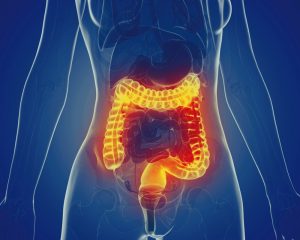Aging is a challenge for everyone. Most of us are familiar with the aging that takes place on the exterior, including the formation of wrinkles and greying of hair. However, aging also affects all other areas of the body. As humans progress through the aging process, it becomes significantly more challenging to put on lean body weight, and older adults tend to lose muscle mass more quickly. So, can you regain lost muscle mass as an older adult? Absolutely. Getting older doesn’t mean you must resign yourself to frailty and weakness. Keep reading to find out tips and tricks for how to get lean muscle as you age.
Why Do We Lose Muscle Mass as We Age?
What exactly is happening during the aging process, and how does it impact muscle synthesis? First, let’s take a look at how our body and cells function during our earlier years. Young adults can easily maintain muscle mass through their 20s and sometimes or early 30s. During our younger years, cells operate efficiently. Muscle tissue can turn over at a rapid rate, and the body can utilize dietary protein for replacing damaged muscle tissue. The repair process for cells, tissues, and organ systems is much quicker, resulting in a faster recovery following workouts and wear and tear from daily activities.
As we age, however, all cellular processes become less efficient. Much like an older car, cells, and body tissues don’t operate as cleanly and effectively as they used to, and it takes more time to recover from workouts and daily wear and tear. As a result, the body is less able to readily use dietary protein to replace muscle tissue with new cells, causing atrophy over time. Muscle building is much more complicated than it used to be.
Rest assured, however, that you can fight against this process. Getting older doesn’t mean you have to resign yourself to a body composition that favors fat over muscle. Maintaining and building muscle mass and staying lean in middle age and old age is tough and takes more work, but it’s certainly not impossible. Taking care of yourself through diet and lifestyle strategies and also help fight against diseases that older adults are more prone to, such as nonalcoholic fatty liver disease and insulin resistance.
Why Is Maintaining Muscle Mass So Important in Older Adulthood?
Maintaining lean muscle mass and supporting muscle growth during older age is about more than simply just looking good. Muscle mass is critical for our overall health and helps support optimal immune function and recovery from injury and disease. Moreover, having a decent amount of muscle mass as an older adult helps protect and fortify bones, joints, and connective tissue, which helps prevent injury. Older adults with more muscle mass most likely to experience injury and are more likely to have a higher quality of life and engage in more activities.
Let’s dive into strategies for how to get lean and stay lean in older adulthood.
How to Tone Your Body as You Age: Diet and Exercise
Increasing muscle mass, staying toned, and losing fat at an older age boils down to your diet and exercise.
1. How to Get Lean Muscle: Engage in Strength Training
As our bodies get older, it’s normal to begin to feel more sluggish than usual and less energetic than we did during our younger years. However, engaging in regular strength training is even more important as an older adult to maintain muscle mass and encourage fat loss.
When we think of strength training, many have us may think of bodybuilders and bench pressing. However, there are many ways to engage in strength training. If you are an older adult that’s new to exercise and strength training, it’s crucial to start slowly. Immediately lifting heavy weights and straining yourself puts you at risk of injury. Instead, it’s best to start out with bodyweight exercises and gradually add weight as you gain strength. Here are a few examples of excellent bodyweight exercises for beginners:
- Pushups: The classic pushup is an excellent way to test your shoulders and arms with strength training. A more accessible version of the pushup is to be on your knees and push up from that position. A more challenging version of the pushup is carried out with only your toes and hands having contact with the ground.
- Crunches: Crunches target your core muscles and challenge your abdominal muscles to lift your upper body weight.
- Russian twists: These exercises target your abdominal muscles as well as the core muscles on your sides and back. Start by sitting on the floor with a straight back and your knees bent. Bring your hands down to the floor on one side of your body, then twist to the other side. If you want an extra challenge, keep your knees together and lift your feet off of the floor while twisting.
- Pull-ups: Pulls-ups are some of the most difficult bodyweight exercises because they require your arms and upper back muscles to lift your entire body weight. Remember to start slow. Your initial goal should be to complete one pull-up. If required, use assistance from an elastic workout band and gradually decrease support until you can complete a full pull-up unassisted.
As you build up your strength, you can use more intense exercises that incorporate weights, for example:
- Lunges: Lunges challenges several lower body muscle groups, including glutes and quads. To increase the intensity of strength training, carry 5-pound dumbbells in each hand while completing lunges. As you build up your strength, increase the weight of the dumbbells.
- Squats: Squats are excellent exercises for your glutes and leg muscles. Hold a 15-pound weight in your hands and gently lower yourself like you’re going to take a seat. Then slowly return to a standing position. As you feel stronger, increase the weight.
- Arm lifts: Holding a dumbbell in each hand, lift your arms straight out in front of you, and then directly to the side. Repeat this motion until your arms are unable to continue.
2. Engage in Stretching and Flexibility Exercises
In order to make the most out of your muscle tissue, it’s important to regularly stretch before and after strength-training exercises. Even when you’re taking rest days from working out, committing to stretching helps to keep your muscles and your body limber. Maintaining flexibility in older age also decreases the incidence of injury and increases the quality of life. Here are a few examples of stretches you can incorporate into your daily routine, in order to maximize your mobility and increase the functionality of your muscle tissue:
- Toe touches: These relatively easy stretches help loosen up the muscles in the legs and back.
- Arm circles: Moving your arms in a circular motion both forwards and backward helps improve mobility of the muscles around the shoulder joint.
- Yoga poses: Engaging in yoga is one of the best ways to ensure full-body stretching. Joining a beginner yoga class or checking out a few poses online is a great way to get the hang of yoga poses that you can then bring with you anywhere.
3. Don’t Forget About Cardio
Engaging in high-intensity cardio is also critical to help older adults maintain stamina and keep their metabolism revved. Regular aerobic exercise is important for reducing fat accumulation while improving heart health. While you don’t need to always engage in high-intensity cardio, aim to at least go on a brisk walk several times a week to keep your heart and blood vessels healthy.
4. Reach for a Post-Workout Snack to Build Lean Muscle
After a workout, don’t wait for hours to eat something. For older individuals, especially, immediately refueling with a protein-rich snack is what you need to gain muscle. A protein shake made with essential amino acid powder or a low-sugar protein bar can be the go-to options.
5. Support Digestive Health
As mentioned above, all organ systems are affected by the aging process, and that includes the digestive system. In older adults, the muscles and tissue throughout the digestive system do not operate as effectively. As we get older, the gastrointestinal tract is less efficient at breaking down food, absorbing nutrients, and moving waste through the digestive tract. This can contribute to malnutrition as well as constipation. In particular, older adults have a more difficult time breaking down dietary protein into bioavailable amino acids that can be shuttled throughout the body to be used for many body processes, including muscle synthesis. There are many ways to fight against these age-related digestive issues. Here are some tips for supporting digestive house so that your body can effectively utilize dietary protein and build muscle tissue.
- Eat more fiber. Fiber is a critical nutrient that is found in plant foods such as fruits, vegetables, beans, nuts, seeds, and whole grains. Increasing your fiber intake is particularly important for older adults, who tend to be more prone to constipation. Eating plenty of fiber on a daily basis keeps things moving and helps your digestive system stay active so you can keep absorbing nutrients. Plus, eating insufficient amounts of fiber puts you at a greater risk of developing diverticulosis and diverticulitis.
- Chew your food well. There are two parts to digestion – mechanical and chemical. Mechanical digestion occurs in your mouth when you chew your food. Chemical digestion occurs in the stomach and digestive tract when stomach acid and enzymes come in contact with food particles and break the bonds between molecules in the food. Chewing food thoroughly increases the surface area of food particles, allowing chemical digestion in the stomach and digestive system to be as useful as possible. To increase the efficacy of chewing, take small bites, and aim to eat slowly.
- Take probiotics. Probiotics are beneficial bacteria that support a balanced gut microbiome. Probiotic bacteria live in the digestive tract and feed on food particles. These good bacteria produce anti-inflammatory byproducts that fight against systemic inflammation in all body tissues.
- Avoid eating large amounts of saturated fat. When you eat a high-fat meal, enzymes are released from the gallbladder into the digestive tract to break apart the bonds in fat particles. However, regularly consuming large amounts of saturated fat wreaks havoc on the digestive system and increases the risk of developing gallbladder disease and experiencing acid reflux. Plus, saturated fat contributes to inflammatory metabolic conditions like insulin resistance, type 2 diabetes, and fatty liver disease as well as cardiovascular conditions. When eating fat in your diet, choose foods with polyunsaturated and monounsaturated fats instead.
- Steer clear of added sugars. Much like saturated fat, consumption of added sugars is irritating to the digestive system and triggers acid reflux in many older adults. Plus, consuming high levels of added sugars increases systemic inflammation and increases the risk of developing fatty liver disease, insulin resistance, and type 2 diabetes.
- Eat foods with proteolytic enzymes. Protein is a difficult compound to break down, particularly the protein found in meat. Protein-digesting abilities become less effective over time, with older adults facing more difficulty breaking down protein into its useable form of amino acids. Certain tropical fruits contain proteolytic enzymes that help the digestive system break down the bonds between amino acids, allowing them to be more readily absorbed. To enhance protein digestion, aim to eat green kiwi, papaya, and pineapple. A fresh fruit salad before eating a lean cut of steak. The enzymes present in these tropical fruits helps break down protein, so you have more individual amino acids available for use in building muscle tissue.
- Take high-quality essential amino acid supplements. Perhaps the best way to make sure you’re getting the protein you need is by supplementing. Dietary protein is made of amino acids, which are the smallest usable component of protein that is necessary for nearly all biological functions. Amino acids are generally categorized into non-essential amino acids and essential amino acids. Non-essential amino acids are synthesized endogenously, which means that the body is able to create these amino acids based on what the body needs at a certain time. On the other hand, essential amino acids must be obtained from dietary sources. In order to support ideal health and maximize the synthesis of muscle tissue, connective tissue, neurotransmitters, and hormones, it is important to obtain optimal ratios of essential amino acids from the foods we eat. For younger people, animal proteins such as chicken breast, fish, in other cuts of lean, fresh meat are excellent sources of essential amino acids. Low-fat dairy products are also ideal sources of essential amino acids for young people. However, the digestive systems of older adults are less efficient and I’m able to bully breakdown protein into bioavailable individual essential amino acids. This is when essential amino acid supplements come in handy. A high-quality essential amino acid supplement provides essential amino acids that are already in their pure form, foregoing the need for digestion and allowing for fast absorption. high-quality essential amino acid supplements also provide balanced ratios of essential amino acids that support the body’s requirements on a daily basis. To combat aging, incorporating essential amino acid supplements into your regimen on a daily basis Is particularly important for supporting muscle synthesis and to fight against muscle wasting. Keep in mind that for older individuals, essential amino acid supplements are superior to whey protein and other protein supplements, since the essential amino acids are available in optimal ratios in their pure, individualized form.
6. Maximize Food Intake
Older adults – women, in particular- are prone to a diminishing appetite in older age. On top of the lower absorption of nutrients, older individuals tend to also consume lower amounts of these nutrients due to lack of appetite.
Though you don’t want to force-feed yourself, it’s important to make sure that you’re getting a sufficient number of calories to support muscle maintenance. muscle cells and muscle tissues require significantly more energy than fat cells and other body tissues simply to maintain the status quo. You can think of muscle cells as powerful energy burners. If you don’t feed the muscle cells, the body will begin to break down muscle tissue and further muscle-wasting that’s associated with aging.
How can you make sure that you’re getting enough calories without feeling uncomfortably full and without overeating? Try out these tips and strategies.
- Eat small, frequent meals. Eating smaller, more frequent meals is superior to eating large meals that make you feel stuffed. Plus eating smaller, more frequent meals increases your metabolism keeps your metabolic rate at a high level. When you eat large meals that have a lot of time in between, your metabolic rate has time to slow down in between meals. On top of that, frequent snacking allows for steadier blood sugar levels while with larger less frequent meals, blood sugar levels tend to fluctuate more.
- Add a shake to your daily routine. Shakes are an excellent way to incorporate extra nutrients, calories, and essential amino acids into your diet. boss because of their consistency, shakes are easily digested in the body and allow for maximum absorption of nutrients. In fact, they’re the perfect vehicle for a high-quality essential amino acid supplement. It might even be a good idea to incorporate a shake into your diet on a daily basis, especially if you are engaging in regular strength training. See below for ideas about how to make tasty and nutritious shakes.
- Eat a high-protein bedtime snack. Eating a snack right before bedtime is one of the most important times to make sure you’re getting a boost of protein. This is because bedtime initiates the overnight fast. Especially for older adults, not eating for 8 hours or so jeopardizes muscle tissue and increases the likelihood of losing muscle mass. To help maintain muscle tissue, eat a small, protein-rich snack shortly before you go to sleep. A nonfat Greek yogurt, a small apple and a tablespoon of peanut butter, or walnuts and raisins are a few ideas.
7. Focus on Nutrient-Dense, Whole Foods
Older adults are less able to process junk foods and perform best when consuming foods that are high in crucial nutrients. The body is more able to digest and absorb nutrients from whole, natural foods. So, what kind of foods should older adults be eating in order to maximize the efficiency of biological mechanisms and muscle synthesis? These are the primary categories of food that you should be eating:
- Fruits and veggies: Fruits and vegetables are packed with vitamins, minerals, fiber, and antioxidants. Try eating a colorful array of fruits and veggies, since different colors represent different categories of antioxidants that support healthy and efficient cellular functions. Purple-colored fruits and veggies such as grapes and eggplant contain anthocyanins like resveratrol. Orange-colored produce like pumpkin and sweet potato contain carotenoids like beta carotene. All categories of antioxidants enhance cellular function across all body tissues, including the muscle.
- Whole grains: Whole grains provide complex carbohydrates for energy. The carbohydrates in whole grains are paired with fiber, protein, and micronutrients that slow down the digestion of the carbs. This serves to prevent blood sugar levels from spiking.
- Nuts and seeds: Nuts and seeds are packed with fiber, healthy fats, and micronutrients that support healthy muscle development.
- Beans: Beans are rich in fiber, vitamins, and minerals, and support healthy digestive processes.
- Lean protein: Both plant-based and animal-based protein sources contain essential amino acids, which are absolutely vital for muscle development. Any single animal protein contains optimal ratios of essential amino acids. On the other hand, plant-based sources of protein tend to be missing one or more amino acids. As a result, it is important to combine plant proteins throughout the day in order to ensure optimal intake of essential amino acids. Supplementation with a high-quality essential amino acid powder is also helpful for filling any gaps.
8. Avoid Junk Foods
Junk foods impair the body’s ability to carry out biological processes smoothly. Eating too much junk food can lead to a decrease in muscle mass and an increase in fatty tissue, as well as a higher likelihood of developing non-communicable conditions like nonalcoholic fatty liver disease, insulin resistance, type 2 diabetes, and cardiovascular disease. When you eat an abundance of junk food, the body sends all resources towards processing the unhealthy food, and important biological processes like muscle synthesis are no longer a top priority. Here are a few general food groups you should avoid:
- Packaged foods: As a general rule, most packaged foods have been heavily processed. This means they have undergone industrial processing to remove ingredients and add artificial ingredients, making the product less healthy. Foods that fall into this category include cookies, breakfast cereals, granola bars, chips, crackers, and other snack foods. If you avoid the middle aisles of the grocery store, this should also help you stay away from these packaged foods.
- Fatty meat and dairy: The fat contained in meat and dairy is called saturated fat. This kind of fat causes inflammation, high levels of cholesterol, and the formation of arterial blockages.
Best Protein-Packed Meal Ideas for Older Adults
If you’re an older adult, you may be struggling with what you can eat that is tasty while also providing optimal levels of essential amino acids, calories, fat, and other nutrients. On top of that, it’s important to eat an all-around balanced diet in order to fight against other conditions that are linked to inflammation as we age.
1. Baked Salmon with Roasted Vegetables
Salmon is packed with protein that offers balanced ratios of essential amino acids. On top of that, salmon is also filled with omega-3 fatty acids to help fight inflammation as you build muscle and strive towards optimal health. Salmon – and meat in general – lack fiber and antioxidants. So, it’s best to accompany meat with a heaping portion of veggies and a normal portion of whole grains.
Prepare the fish by marinating salmon filets for 30 minutes in lemon juice, garlic, salt, and pepper. Cover with your favorite spiced rub. Align filets on a baking sheet and cook until done.
To prepare a vegetable roast, cut up veggies of your choice into similarly sized pieces. Try a combination like an asparagus, broccoli, onion, garlic cloves, and eggplant. Toss in a drizzle of olive oil, salt, pepper, garlic powder, and oregano. Spread out on a baking sheet and roast until complete. Prepare brown rice on the stovetop. Serve the salmon filet and roasted vegetables over a bed of brown rice.
2. Curried Tofu, Vegetables, and Beans
This dish is a tasty and easy option that is perfect for lunch or dinner. Plus, it stores in the refrigerator for days. First, slice up your favorite vegetables for a stir fry. For example, slice up onions, garlic, carrots, broccoli, snow peas, red pepper, and green pepper. Throw into a frying pan. Add in a block of firm tofu and use a spatula to break it up into smaller chunks that mimic a meat texture. Drain a can of chickpeas and add to the pan. Drizzle the mixture with olive oil and turn the heat on high. Stir-fry until the vegetables are cooked and tofu is warmed through.
Now it’s time to add your seasonings. Throw in curry powder, turmeric, cumin, and a dash of coriander. Add salt and pepper to taste. To create a sauce, add about half a cup of light coconut milk and half a cup of vegetable broth. Allow to simmer, and taste frequently to check if it needs any more spices. Add a couple of handfuls of spinach to your creation just for an extra punch of nutrition. Serve with a squeeze of lemon juice and chopped cilantro over a bed of brown rice or quinoa.
3. Mini Breakfast Burritos
Though breakfast burritos tend to have a bad reputation for being unhealthy, so here, we’ve devised a healthy version that still offers all of the delicious flavors without the saturated fat. Though here we’re describing how to prepare mini burritos, feel free to make the same recipe using a larger burrito wrap.
To create the filling, sauté chopped vegetables like onion, garlic, pepper, and spinach in a pan with a drizzle of olive oil. Once the veggies are cooked, add in two egg whites and one egg yolk and scramble. This ratio of egg white to egg yolks ensures that you’re getting all of the protein and vitamins you need without excess saturated fat and cholesterol. For the lowest calorie version, stick to scrambling just a few egg whites. Add in a can of drained black beans. Now it’s time to add your seasoning. Mexican seasoning works the best for a breakfast burrito. In a pinch, sprinkle with a premade burrito or taco seasoning. If you have your own spices at home, sprinkle with chili powder, garlic powder, onion powder, paprika, salt, and pepper. Pour your favorite salsa over the mixture as well as a drizzle of your favorite hot sauce, if you like heat. Turn off the stovetop and set it aside.
In a separate bowl, mash up an avocado with chopped cilantro, lime, salt, and pepper. Spread the avocado mixture over mini whole-grain tortillas. Place a helping of the eggs and beans onto the middle of the tortilla and roll so that the filling is secured. Enjoy!
4. Pasta Bolognese
This is a healthy spin on a classic dish that you can easily heat up at work for lunch or enjoy for dinner. We like to pack our pasta Bolognese with tons of vegetables for extra fiber, vitamins, minerals, and antioxidants. First, sauté your favorite vegetables in a pan until well-cooked. Onions, garlic, red pepper, cubed sweet potato, and chopped kale. Add 99% lean ground beef and sauté until everything is well cooked and the beef turns from pink to a brown color. Season with dried oregano, basil, parsley, red pepper flakes, garlic powder, salt, and pepper. Pour your favorite tomato sauce into the mixture and allow to simmer gently. While simmering, prepare your favorite shape of whole-grain pasta. We love whole wheat or buckwheat spaghetti or spirals. When the pasta is al dente, serve with a helping of the veggie-laden and protein-packed sauce. Just as a reminder, before enjoying your Bolognese sauce, enjoy a fresh fruit appetizer of papaya, pineapple, and kiwi to maximize protein digestion.
5. Shakes
Protein shakes are critical for aging adults who want to boost their lean muscle mass and improve their body composition. Adding a shake to your daily routine is an excellent way to make sure that you’re getting the calories and essential amino acids that your body needs on a daily basis. Here we’ve provided a few ideas for delicious, nutrient-dense shakes. For all shakes, we recommend using an essential amino acid supplement, which provides the easiest form of protein to digest.
Chocolate Banana Shake
This shake tastes like a dessert you don’t have to feel guilty about. This shake is super healthy and is packed with nutrients that are easy to digest. The cacao powder adds an extra boost of antioxidants.
- 2 ripe, frozen bananas
- 2 teaspoons cacao powder
- 1 tablespoon peanut butter
- 1 teaspoon flaxseeds
- 1/3 cup oats
- 1 serving essential amino acid powder
- 1 cup of soymilk
Add all ingredients to a blender and blend until thoroughly combined. If you enjoy shakes with a thicker consistency, include less soymilk. If you prefer shakes with a thinner consistency, add more soymilk.
Lean Green Machine
This shake recipe manages to combine antioxidants with protein in a tasty twist.
- 1 cup spinach
- ½ cup chopped kale
- 1 cored apple
- 1 fresh squeezed orange
- 1 handful of ice cubes
- 1 serving essential amino acid powder
Blend until smooth and enjoy! If more liquid is needed, add cold water until it reaches the desired consistency.
Beet Booster
This drink is nutritious and packed with antioxidants while also assuming a beautiful color! Try combining the following ingredients:
- 1 cooked beet, cubed and frozen
- 1 packet acai berries
- 1 ripened frozen banana
- 1 serving essential amino acid powder
- 1 cup soymilk
Blend all ingredients until smooth and enjoy! If you prefer a thinner consistency, simply add more soymilk.
How to Get Lean Muscle: Conclusion
Building and maintaining lean muscle mass in older adulthood is tough, but not impossible. The right pattern of diet and exercise can ensure that your body stays as efficient as possible at building lean muscle. Small, frequent meals, strength training, and essential amino acid supplementation can be very helpful for encouraging muscle growth and getting rid of body fat.
























